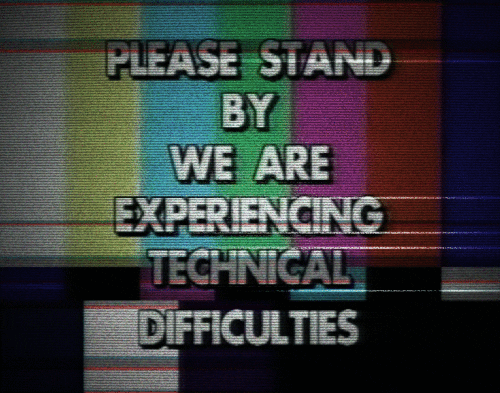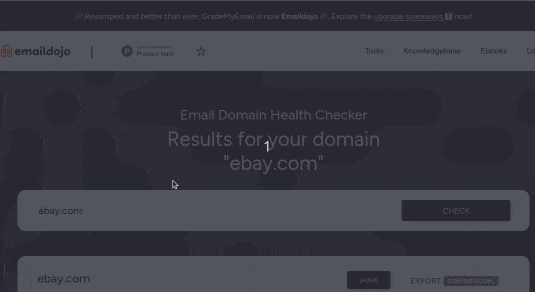[Complete Guide] 📬 Troubleshooting Emails bounces and fixing email delivery rates
Published on 2020-04-22· Updated on 2021-12-15
Introduction
I sent a message to an email address, and it bounced back. That makes me more worried than anything else. Do you know why?
- I spent my time and money procuring this stupid email address which just bounced. But guess what's weirder, I thought its the wrong email address which is causing this bounce. But later I discovered that even the email address is correct, email ISPs like Gmail, Yahoo or Outlook is not accepting my emails and bouncing it back.
- Even if I keep these monetary losses aside, my sender domain reputation is undergoing a slow poisoning happening on my sender domain's reputation, which is even more challenging to recover.
You might also be sharing the same boat with some similar problems with your email bounces. In this tutorial, I will be sharing the A-Z of What is email bounce, how to troubleshoot the real reasons behind email bouncing and most importantly how to fix it to retain your sender domain's reputation which is more complicated than anything else to earn.
Higher Sender Domain Reputation = High Email Delivery/Inbox Rates.

FAQs
- What is Email bounce?
- Types of Email bounces
2.1 Soft bounce
2.2 Hard bounce - How to improve the Bounce Rate?
- Email bouncing vs rejecting?
- How to Fix bounced or rejected emails?
- Troubleshooting Email bounce
What is Email bounce?
When a recipient's mail server rejects an email with a reason in the form of an automated message, then the complete process is known as Email bounce. Email bounces are directly proportional with sender domain reputation. Higher the People often get confused between email bounce and email failure, which leads to a misunderstanding that every email bounce ounce rates, lesser will be the reputation.
People often get confused between email failures and email bounces, which leads to a misunderstanding that every failure is an email bounce and impacts domain reputation.
You need first to understand, what are the different types of email failures and which of them are email bounces:
- Asynchronous Email Failure: This type of email failures happens when the recipient's mail server accepts your email message, and then after some time rejects the actual delivery to recipient's mailbox. All asynchronous email failures are email bounce, and these are the ones responsible for impacting the reputation of your sender domain and email delivery. In the following section, you will be learning the different types of Asynchronous Email and how to protect your sender reputation.
- Synchronous Email Failure: This type of email failure occurs in real-time during the communication process between the sender and the recipient mail server. An important point to note is, this failure happens in the same connection thread, and the response of failure is immediately triggered. There are various stages involved in an SMTP connection thread, and omissions can happen at every step. While all stage failures are a form of an email bounce, but not every failure impacts the sender reputation. In the next section, you will learn the different stages of SMTP connections and failures at which stage are a type of hard bounce.
There are two errors which are not a bounce and are just common failures which can occur anytime during the connection:
- The recipient mail server dropped connection in between because it went shut down. You will get an SMTP 421 error response in such a scenario.
- If you send a bad command with a wrong parameter or the message lines are too long then you are violating the SMTP, and in such a case you might get 5xx error response.
Email Bounce at SMTP Stage 1: Dropped or failure can happen at an initial SMTP connection
Reason for such an email bounce:
- The reputation of your IP address is so bad that the recipient mail server doesn’t want to entertain any email from your end. In such a case, you will be getting a Temporary (4xx) failure. If this the case, then that means your sender IP address is blacklisted on DNSBLs or RBLs.
- The recipient's mail server is completely overloaded and not in a position to temporarily accept any incoming SMTP connection. If this the case, then nothing to worry just retry after some time. Bounce because of this reason won't be impacting the reputation of your domain or IP address. But, remember the retries should not be too frequent.
- You are trying to send mail to a wrong email address where the recipient domain is even not mapped to an MX (mail server). If this the case, then nothing to worry it is not going to impact the reputation of your sender domain or IP address.
- There is some configuration issue with your mail server, which the end recipient server has in its policy checklist; this can be like the non-existence of a reverse DNS.
Email Failure at SMTP Stage 2: After the HELO or EHLO there can be an email delivery failure with bounce
Reason for such an email bounce:
If you are receiving a failure after HELO or EHLO then check for the reason, this is probably either you have mentioned a syntactically bad or trying to forge the hostname in the HELO command.
If this the case, then this can impact the reputation of your sender IP address.
Email Failure at SMTP Stage 3: Just after the MAIL FROM command
If you are receiving a failure after sending the MAIL FROM command, then check for the reason this is mostly because your return path domain is blacklisted in some of the DNSBLs or RBLs. Getting blacklisted is a serious concern and you should read about why your domain might have been blacklisted and how to get it whitelisted.
Email Failure at SMTP Stage 4: Just after the RCPT TO command
This stage is very critical, and most bounces happen at this stage. This is the stage where the recipient's anti-spam filters start their real job. Most mail servers try to see if the RCPT TO email address is a valid mailbox on their server or not. All failures till SMTP stage 4 are mostly gracefully passed in case of corporate mail servers, but in leading email ISPs have started following strict check-in all the stages. If you passed in this stage, then the receiving server is bound to accept your email packet else it will violate the SMTP norms. So, there are lesser chances of you getting any hard bounce after this stage.
Email Failure at SMTP Stage 4: Just after the DATA command
Getting a synchronous failure or bounce at this stage is not very common, because it increases resource at the recipient server's end. The most common reason for getting a bounce after this stage is the content of your email. Either the content is looking spam, or the links used inside the email belongs to a domain or IP address which carries a bad reputation or there is an email authentication failure like SPF, DKIM or DMARC mismatch.
Types Of Email bounces
Synchronous and asynchronous failures in email bounce are further divided into two categories, Hard bounce and Soft bounce. These types are critical when you talk about the performance of the campaign, and grouping can be done in permanent failures and temporary failures.
You can think of soft bounce as a temporary failure which blocks emails due to some short term issues. However, hard can be considered as a permanent failure where emails are invalid or don't exist in reality.
Soft bounce

Soft bounces are the temporary issues for a short time at the recipient's email server. These email addresses are valid but not accepted by the server. The soft bounce emails can be sent again (retried) after some time. Different reasons are as follows:
- An email message is too large.
- A mailbox at recipient's server is full.
- The domain does not exist in reality.
- An email server is down.
- Improper configuration of a mailbox.
- Email-id blocked due to content.
- Email does not meet the recipient's policies.
Hard bounce

Hard bounces are permanent failures. Different reasons are as follows:
- Email address doesn't exist.
- Email address is invalid.
- The recipient has completely blocked you as a sender.
How to improve the Bounce Rate?

Email bounce rate is the percentage of undelivered emails which were sent but later returned from the recipient's email server. It is said that a good campaign should have a high inboxing rate, high open-rate, and high click-rate but remember high bounce rate never a good option.
It is always recommended that keep the bounce rate as low as possible because flat bounce rate = high email delivery.
Always calculate your bounce rate before and after the email campaign. To calculate the bounce rate you can use the formula as follows:

Bounces directly damage your domain reputation (especially hard bounces). If bounce + dropped email rate is above 5% of the entire campaign, then the negative deliverability will impact your email campaign.
There are few fail-proof strategies to reduce bounce rate:
- Maintain a clean email list 📃 :
To maintain an excellent hygienic list, you must always identify and remove email addresses which are invalid and non-engaging. Always ask your platform if they have the functionality of removing the hard bounces and dropped emails automatically. So that in every iteration your email list gets clean. - Send Email Regularly:
Sending Email once a week will help you analyze and finalize your email list. These will also help you to increase engagement with your customers. - Use double opt-in:
Sending a confirmation email while your customer is opt-in through subscription form or while sign-up. This way, you are making sure the Email is valid and active. - Monitor Email delivery 📈 :
Track each activity of your emails, especially the delivery rates, make sure the bounce rates are always low, and your response rates are still higher.
Email bouncing vs Rejecting?
Email is a message which is sent from one (MX) sender's mail exchanger server to another (MX) mail exchanger server. This server has MTA's(Mail Transfer agent) installed for accepting and rejecting emails. When this MTA forwards email to another MTA, the MTA is free to accept and reject Email with SMTP errors like "over quota", "user unknown", etc.

Remember not every bounce mail is rejected but every rejected Email is a bounce (especially hard). The bounced Email is retried, but the rejected Email needs to be analyzed and remove from the list before you send out your next campaign.
Rejected emails are either unsubscribed emails or marked as spam emails.
Bounced emails are invalid email-ids which doesn't exist or may be temporarily unavailable due to space constraint.
How to Fix bounced or rejected emails?
Every bounced or rejected emails are responded with the reason for failure, and all you need to implement a fix to bounce. These fixes will help you control your Email bounce rate and improve your campaign success ratio.

- "The email account that you tried to reach" is not available your email address might have a wrong typo or that email address not exist anymore.
What can you do?
1. Check for a common type of mistakes
- Spelling errors.
- Check for space before and after "@".
- Dots at the end of the email address.
- Quotation marks.
2. Search for the different email address that the same person uses.
Note: if you get this error for email-ids associated with schools, colleges or organization then contact the administrator. - "Message temporarily rejected"
If you get this error as bounce there are two main reasons which are as follows:
1. You email message or links suspicious.
2. You have added a large group of people in Cc or Bcc.
What can you do?
1. Remove links from the email message which redirects to websites asking personal information.
2. Instead of adding large no of people in Cc or Bcc, create a group for people who you want to send similar Email at once.
For eg., if you want to send a product release emails, then your Email should be product(dot)release(at)domain(dot)com. - "Recipient server did not accept our requests."
This error message states that emails server is not available. This problem usually goes away automatically without you doing anything. Always retry after some time.
What can you do?
1. Check for mistakes in the recipient's email address.
2. Contact your recipient's email provider support team.
Troubleshooting Email bounce 🛠.

- Read the bounce message. It describes why exactly your email was blocked. Some common reasons:
a. Server not responding: This message indicates that the recipient server is not available due to some issues you should try sending the same email later.
b. Recipient's email does not exist: the message indicates the recipient you are trying to reach is not available or maybe don't exist any more. - If the Bounce message is easy to solve, correct the issue that it mentions.
This messages are clear and also explain why an email is a bounce. You should follow the steps to solve the issues which are quickly fixed without taking anyone's help. - If the bounceback seems challenging to interpret, You might have blocked few email-id due to "spam-like" email content.
There may be content in the bounce message that starts with X-Spam Status, which can help with accurate information about the type of message. If the word looks unknown, try contacting your third-party spam filter or try asking your administrator. - Few servers require specific configuration for DomainKeys, so you can add your SPF and DKIM in the zone file of your Domain. you can check you to configure SPF and DKIM for your Domain.
- Setting up SPF and DKIM for domain
- Setting up for specific server
Conclusion
Email bounce is always bad for your domain reputation. So it is still better to clean your email list before sending a campaign. Always use the proper steps to collect emails while adding an email address to list.
I hope this tutorial was useful in sharing information about email bounce back and ways to handle them effectively. Feel free to share your experience below in the comments.
Other Related Tutorials.
Grade My Email
Check your spam now?
Netcorecloud's toolkit is the solution to all your email problems.

You can also explore
Netcore connects & unifies your data across all sources, connects to your marketing channels and provides you with control over AI Powered automation and personalization.
Deploy emails that are
screenshot worthy!













Vikram Sahu 🦉
Developer Evangelist, Pepipost
💻 Senior Software engineer → 🥑 Developer Relations guy → 🤓 Building Community for Email Geeks 🎟 → Speaker 🎙